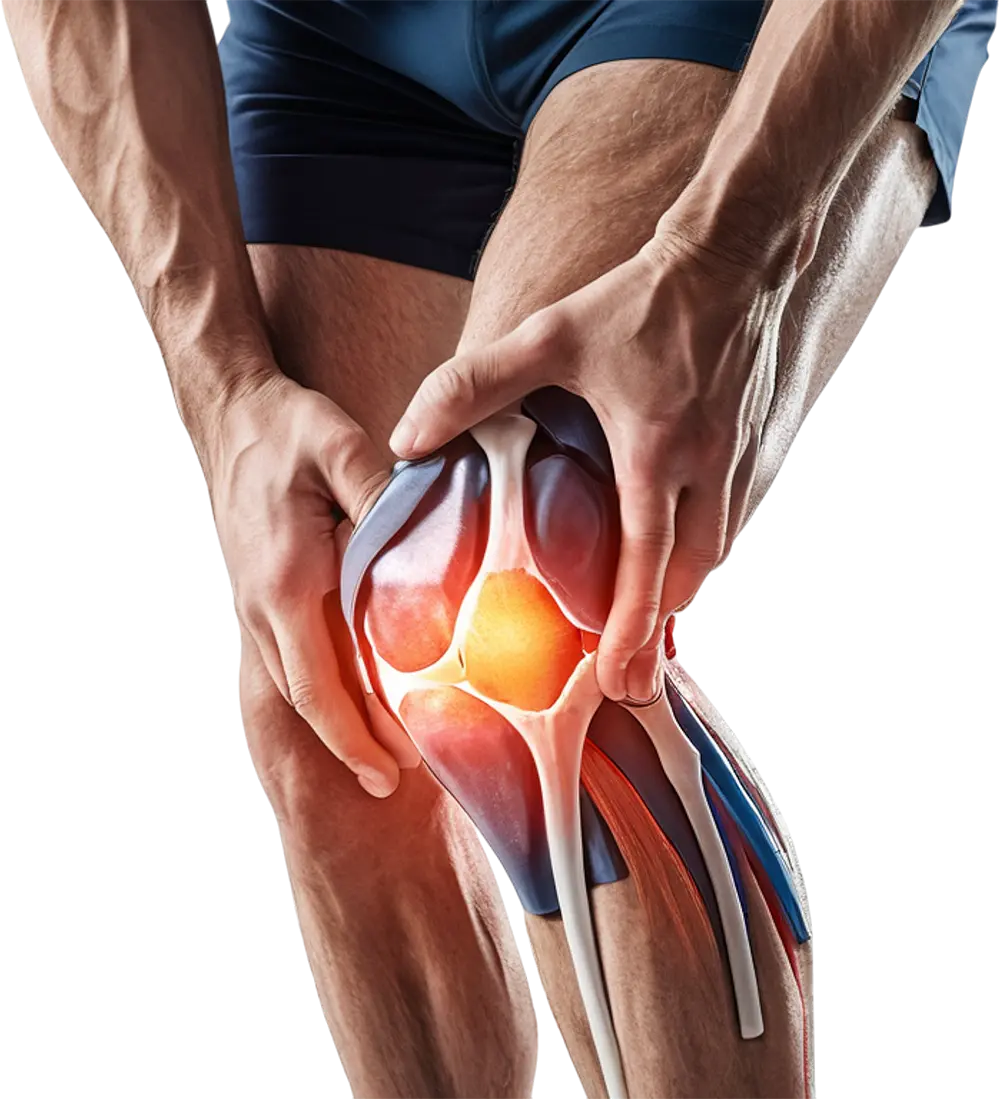
New Announcement...
Joints connect the bones in your body while enabling your skeleton to rotate and swivel. The ends of the bones in a joint are connected by thick bands of tissue called ligaments and are covered with smooth, plastic-like tissue called cartilage that prevents them from rubbing against each other. A delicate membrane called the synovium produces a lubricant to reduce friction and wear in the joint.
Age, stress, and disease can make joints stiffen in much the same way as wear and a lack of lubrication can cause stiffness and squeaking in a door hinge. The most common cause of joint pain is arthritis, which afflicts about 43 million Americans, or nearly 20% of the population. In patients with arthritis, the joint’s cartilage lining wears away, allowing the bones to rub against each other, resulting in friction, swelling, stiffness, pain, instability, and sometimes deformity. Severe arthritis can cause crippling pain when sufferers bend, walk, climb stairs, or even sit. Joint pain can also be caused by deformity or by direct injury to the joint, as in the case of trauma or a sports injury.
When conservative treatments prove inadequate, the surgeons here at SBJS can frequently relieve joint pain with minimally invasive surgical procedures, such as joint realignment, ligament reconstruction, and arthroscopy. During arthroscopy, which means “ to look inside the joint,” the surgeon inserts a pencil-sized arthroscope into the joint through a tiny incision. Fiber optics within the scope enable the surgeon to clearly see the internal joint structures on a TV monitor and to maneuver special microsurgical instruments to repair or remove damaged tissue.
When the procedure is completed, the incisions are sutured shut, usually with just a single stitch, and then covered with a sterile dressing. A brace or ACE bandage may be placed around the joint to provide protection and stability. Arthroscopy is generally far less traumatic than “open” surgery. Most patients have the procedure as outpatients and are home within several hours.
Very severe joint pain and disability may require total joint replacement (TJR), a surgical procedure in which arthritic or damaged surfaces in a joint are removed and replaced with an artificial joint called a prosthesis. The prosthesis consists of metal-alloy or ceramic components that replace diseased bone, and high-density plastic that replaces damaged cartilage.
Performed since the 1960s, TJR results in pain-free living for 90% to 95% of patients, and enables them to return to normal functioning and their favorite activities. The hip, knee, and shoulder are the joints most frequently replaced; nearly a half a million hips and knees are replaced each year in the United States alone. New surgical techniques and more durable prosthesis components are helping to extend the lifetime of total joint replacements— an important advantage for the growing number of younger patients who are electing to have the procedure.
After joint replacement surgery, your condition and progress are closely monitored for several days by your surgeon, nurses, and physical therapists. The more quickly you get moving again, the more quickly you will progress. For this reason, patients are encouraged to get up and start moving around as soon as possible after surgery—preferably the day of surgery.
Physical therapy is a key part of recovery. As soon as a patient is medically stable after surgery, a physical therapist recommends certain exercises for the affected joint. To ease the discomfort the activity will initially cause, pain medication is recommended prior to exercise sessions. In addition, the physical therapist will go over plans for rehabilitation following hospital discharge.
Joint replacement patients are generally discharged from the hospital when they achieve certain rehabilitative milestones, such as getting in and out of bed unassisted or walking 100 feet. Knee and hip replacement patients can expect to be discharged home within 1-2 days and some will be able to go home the same day of surgery. Physical therapy at an outpatient facility is preferred, but some patients may utilize home health care physical therapy.
While circumstances vary, patients are candidates for joint replacement surgery if:
Only you can decide whether your pain and disability warrants joint replacement surgery. However, the physicians at SBJS are committed to helping you make an informed decision. They will take the time to fully explain your diagnosis, treatment options, and potential outcomes. Given the “big picture,” you can then make an educated choice about which type of surgery to have or whether to continue with more conservative methods of pain management.